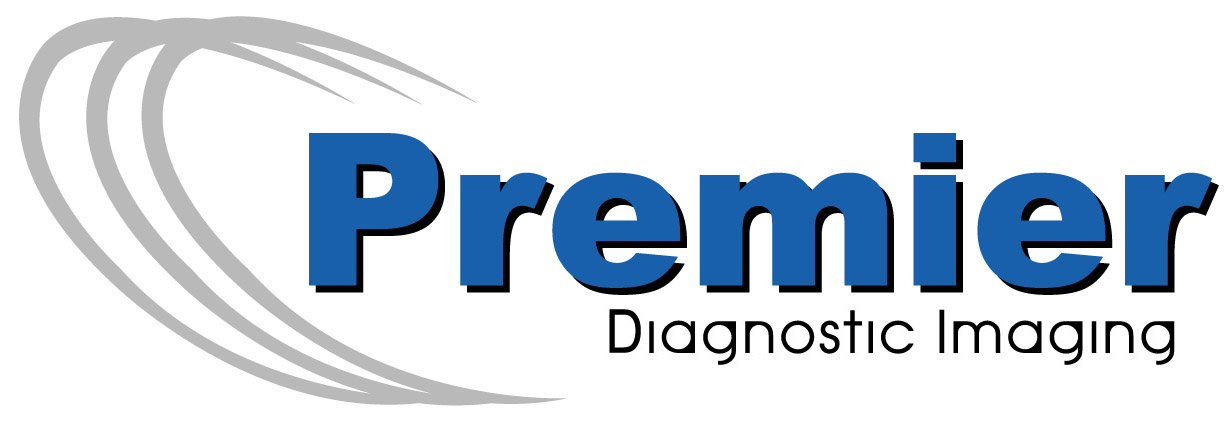If your doctor gives you an order for diagnostic medical imaging, you may wonder why they prescribed an MRI or a CT scan. MRI and CT scans are some of the most common types of medical imaging performed. Both procedures provide images of the human body and are used by various medical specialties, like orthopedics and oncology.
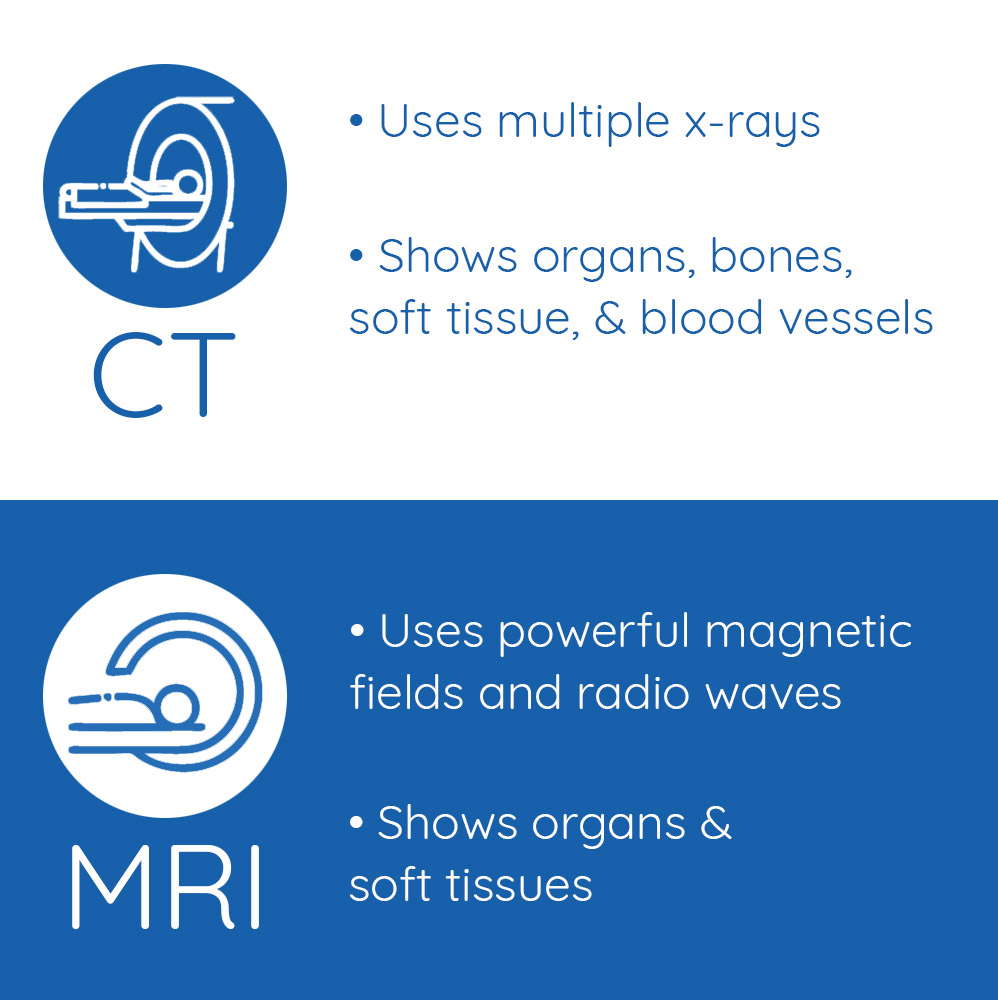
CT scans and MRI scans are both non-invasive, relatively low-risk procedures. They provide essential information to your doctor, helping them to diagnose your illness or injury. But what are these tests? How do they work and what is the difference between MRI and CT scans? In this article we’ll cover the basics of each diagnostic imaging procedure including:
MRI Scan
What is an MRI?
An MRI (Magnetic Resonance Imaging) imaging test uses a strong magnetic field and radio waves to create computer-generated, detailed pictures of the organs and tissues in your body, including the brain, spine, thorax, vascular system, and musculoskeletal system (including the knee and ankle).
- Uses powerful magnetic fields and radio waves
- Detailed images of organs and soft tissues
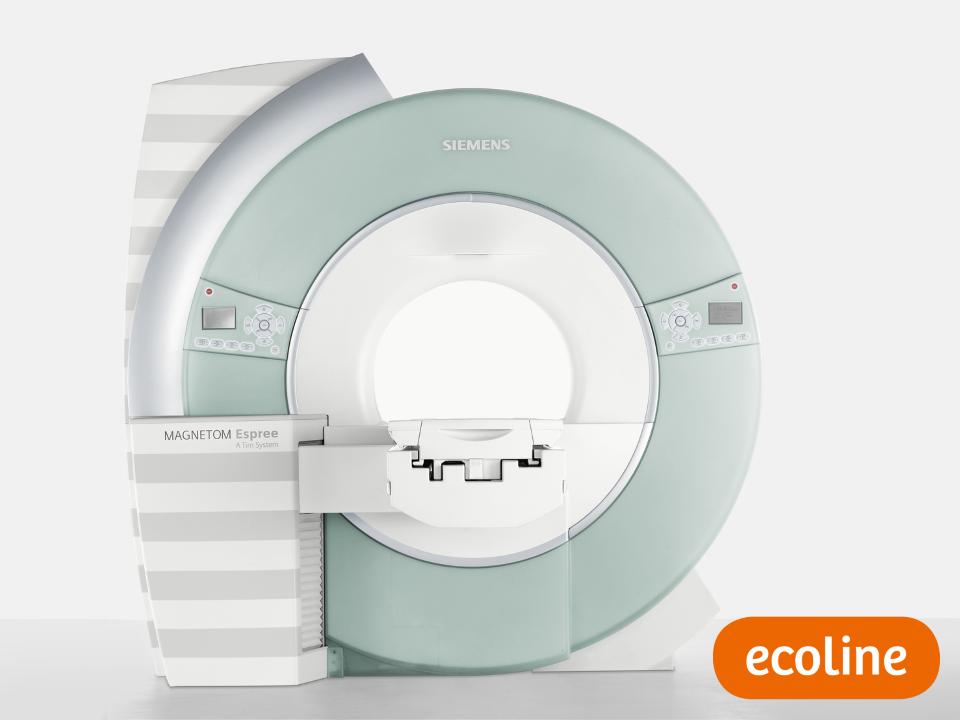
Why would a doctor order an MRI?
MRI imaging is more likely to show certain diseases, injuries, or tumors in the body’s soft tissues than other imaging methods. MRIs of the heart and blood vessels can show damage or blockages, while images of the abdomen can show abnormalities of the organs or tissues.
An MRI is beneficial when looking at joints, as it can show arthritis or injuries such as torn ligaments or cartilage. It is also frequently used to see nervous system structures. Additionally, MRIs provide detailed images of the brain and spine, including the spinal cord and the spine’s supporting soft tissues.
Common MRI uses:
- An MRI scanner excels at showing images of soft tissue injuries such as torn ligaments, rotator cuff injuries, and herniated discs.
- Images of the brain help diagnose traumatic brain injuries, tumors, spinal cord injuries, aneurysms, strokes, or multiple sclerosis.
- MRIs of the spine can show damage to the discs in the spine, inflammation, and bone infections.
- An MRI of a joint can show torn ligaments, muscle tears, or arthritis.
- Abdominal MRIs can look for cancerous tumors and show certain liver, spleen, kidney, and pancreas diseases.
- MRIs are used for men to determine prostate cancer and guide biopsies of the prostate.
CT Scans
What is a CT Scan?
A CT scan is a painless, fast, noninvasive imaging test. It combines a series of x-ray images taken from different angles around your body. This computerized tomography scan was also previously known as a CAT scan.
CT scans create cross-sectional images of internal organs, bones, soft tissue, and blood vessels that provide greater detail than traditional x-rays.
- Uses multiple x-rays
- Organs, bones, soft tissue, and blood vessels
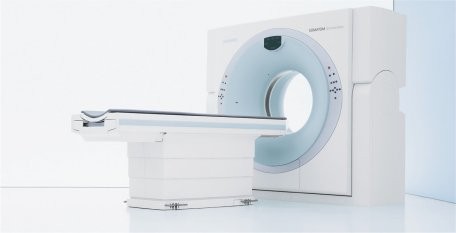
Why would a doctor order a CT Scan?
Your doctor might order a CT scan to produce images of specific organs, joints, or tissues inside your body. Many doctors use them to guide procedures, such as biopsies, surgeries, and radiation therapy. They are also used to create treatment plans.
Typical CT scan uses:
- CT images can help doctors see tumors or masses in the lungs, liver, and other organs.
- CT images enable physicians to diagnose and monitor emphysema.
- These scans are also used to diagnose and monitor circulatory (blood) system diseases and conditions, such as coronary artery disease, aneurysms, and blood clots.
- CTs can spot kidney and bladder stones, abscesses, and inflammatory diseases such as ulcerative colitis.
- A CT scan is widely used to diagnose and monitor cancerous tumors and to help doctors perform biopsies.
Premier Diagnostic Imaging offers specialized CT scans of the heart and lungs. The cardiac CT scan for calcium scoring (also called a coronary calcium scan) identifies coronary artery disease.
Another specialized CT scan offered by Premier Diagnostic is the lung health scan. Lung CTs help diagnose diseases such as pneumonia, bronchiectasis, tuberculosis, inflammation, or chronic obstructive pulmonary diseases. It is especially effective for catching lung cancer at its earliest stage when treatments are most effective. A lung CT is especially recommended for people who smoke now or have a history of heavy smoking.
Could I need both, an MRI and a CT scan? Why do I need an MRI after a CT scan?
Depending on your symptoms, health conditions or previous test results, your doctor could order both tests. You also might need an MRI after a CT scan if the CT scan didn’t give enough information about your condition to your doctor.
MRI and CT are frequently used to image the same areas of the body. However, an MRI can better show the soft tissue structures, some of which are difficult to see with other imaging tests. If you need a more detailed image of your soft tissue, ligaments, or organs after a CT scan, your doctor will routinely suggest an MRI.
Accuracy
Which type of scan is most accurate?
Both MRI and CT scans have a high degree of accuracy. MRI images are highly detailed and used for distinguishing between normal and abnormal soft tissues. Yet, in some situations, a CT scan can detect problems more efficiently than an MRI, including acute bleeding and bone fractures.
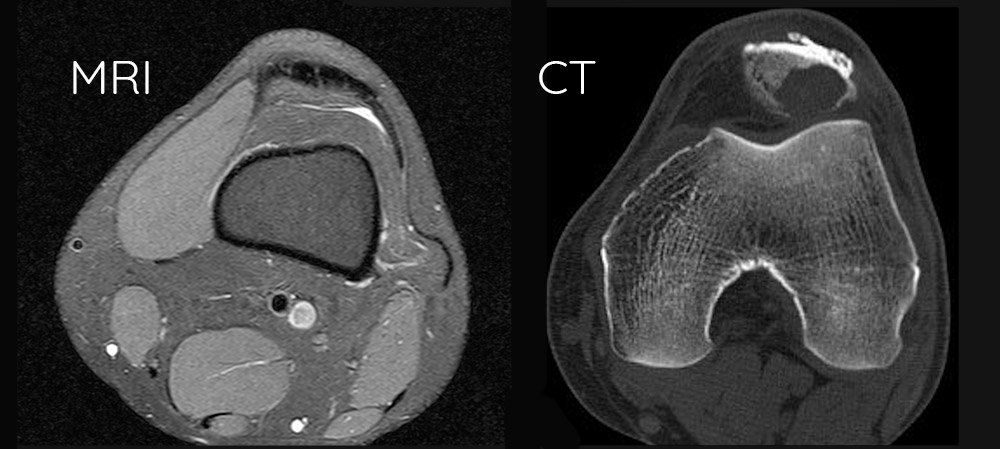
Comfort
Which takes longer, a CT scan or MRI?
Most MRI scans take an average of 45 minutes, with some taking as few as 20 minutes. Longer exams may take up to 90 minutes, depending on the image location and if you will need a contrast medium.
On the other hand, CT scans can take anywhere from 10 to 30 minutes, on average, depending on the body part and if you will need contrast dye.
Noises and Claustrophobia
Noise – MRI machines can be noisy. They make a clicking noise and also may produce a banging sound. Both noises are normal and do not indicate any danger.
Premier Diagnostic Imaging works hard to ensure your experience is positive and comfortable. Headphones with music (of your choice) help muffle MRI noise and keep you in communication with your technician.
Claustrophobia – Most people are fine with MRIs, but some find it challenging to stay still for the time it takes to complete an exam, and some feel confined by the small space.
If you have claustrophobia, Premier Diagnostic Imaging offers an Open MRI. It is more spacious and accommodates patients of all sizes. Sedation may be arranged for anxious patients, but very few patients require it.
Because a CT scanner is shaped more like a doughnut rather than a tube, it does not surround your whole body. People with claustrophobia don’t generally have a CT scan problem like they might in an MRI.
Safety
Is an MRI harmful?
MRI is considered one of the safest technologies for medical imaging because it doesn’t carry the radiation risk associated with X-rays or CT scans. Most concerns about MRIs involve people with metallic implants or medical devices in their bodies. If you have any metal or a medical implant, such as a pacemaker or Cochlear implant, be sure to discuss the information with your doctor.
Is a CT scan harmful?
Because a CT scan uses x-ray radiation, you may have questions about the risk of exposure during the test. The dose of radiation used is minimal. It is estimated to be around the same as you would naturally be exposed to in the environment for a period of between several months and several years.
The chance of developing fatal cancer as the result of a CT scan is less than 1 in 2,000. However, CT scanning is not recommended for pregnant women unless medically necessary because of the unborn baby’s potential risk.
Which costs more, MRI or CT scan?
On average, MRIs are twice as expensive as CT scans. The price of your tests can vary between different providers. Depending on your insurance plan, you may have to pay a deductible or a co-pay. Premier employees will be happy to provide you specific cost information related to your exam and insurance plan when you call 931-528-1800.
Which type of Imaging is best for me?
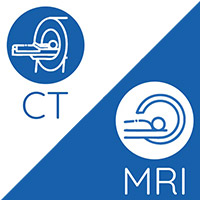
Your doctor will recommend which type of diagnostic imaging procedures you should get based on your symptoms, your medical and health history, and the types of images needed. The doctor will consider the type of tissue being imaged, the level of image detail needed, the speed required to do the test, the use of x-rays, or whether the patient has metal implants.
While both CT scans and MRIs are non-invasive and low-risk procedures, understanding each method’s risks and benefits is helpful as you meet with your doctor.
Website Content by Andrea Cunningham, RN, BSN
Medical Review by Seth Means, MD
Sources:
FDA: What are the Radiation Risks from CT?
Radiologyinfo.org:
Magnetic Resonance Imaging (MRI) Procedures
Computed Tomography (CT)
